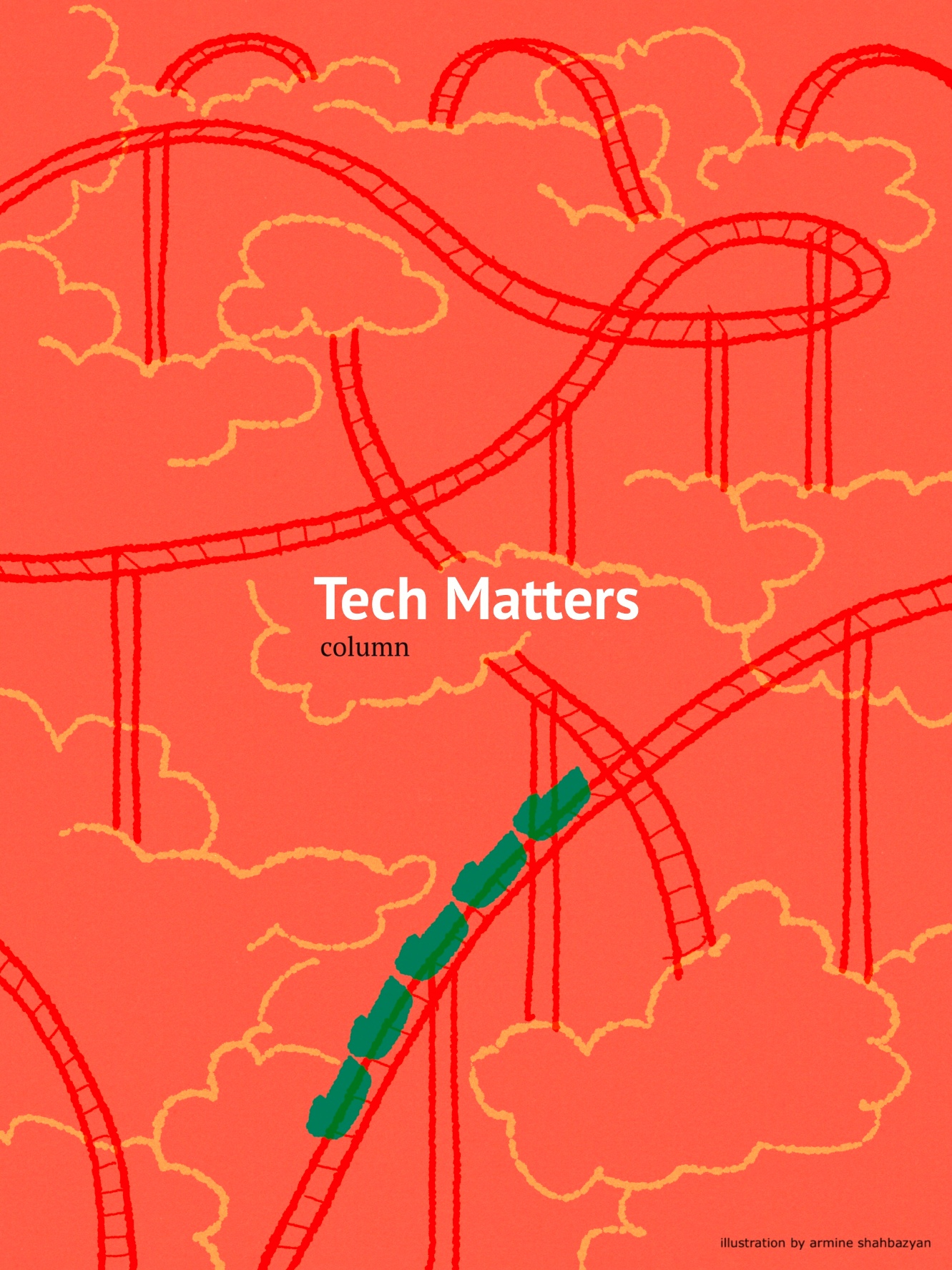
Why Tech Matters
The idea behind this column is simple: while we often reference the incredible global asset that the Diaspora is for Armenia, we have yet to find a formula for the systemic engagement of this asset for Armenia’s development. Yes, there are ample individual examples of diaspora-Armenia cooperation leading to significant progress forward for the country, but no structured, concentrated and coordinated effort to put into play the full force of the diasporan network across sectors of Armenia’s economy. Over the next few months, we will explore not only successful examples of this cooperation, but highlight areas where a similar approach will lead to outsize benefits.

Raffi Kassarjian is CEO and Principal Advisor at Sensyan, a boutique advisory firm focused on the growing Armenian tech sector. Since moving to Armenia in 2008, Raffi has led the following organizations as CEO: iCON Communications (pioneer wireless internet service provider), TeamViewer Armenia (also serving as Senior Vice President at TeamViewer GmbH), and the Union of Advanced Technology Enterprises (UATE). He was also a member of the Management Board of Converse Bank Corporation. Previously, Raffi was Vice President and General Manager at Fair Isaac Corporation (NYSE: FICO). Prior to Fair Isaac, he was a Senior Manager with Accenture’s Strategic Services practice.
Raffi is an adjunct lecturer at the American University of Armenia, and founding board member of Repat Armenia Foundation, Impact Hub Yerevan, and EVN Report.
Also see
Listen to the article.
If 2024 was the year that Artificial Intelligence became the mainstream topic in tech, then 2025 can be qualified as the rollercoaster of hype, disillusionment and renewed momentum. Sky-high expectations, reflected in soaring stock prices of companies like NVIDIA, have been tempered by the trough of disillusionment. One major jolt came when China’s DeepSeek claimed breakthrough results at a fraction of the investment made by the main AI giants like Open AI, Alphabet, Meta and Microsoft. Yet optimism has returned just as quickly, buoyed by the rapid-fire introduction of new and more powerful models by these same companies, and reinforced by the U.S. administration’s “innovate over regulate” strategy for AI.
These wild swings in the market’s prognosis of the potential of AI are likely to continue for some time as all involved try to separate signal from noise in this incredibly fast-moving vector of innovation. The global impact of this technology will very quickly eclipse earlier tech revolutions such as the internet and social networking.
The breakneck speed at which AI is evolving is due to simultaneous exponential growth across its three core pillars: data, algorithms and processing power and capacity. The growth of data is mostly self-fulfilling: the more than one billion weekly active users interacting with Large Language Models (LLMs), across the major providers generate queries which are fed into future versions of these models. Moreover, as technology vendors and enterprises integrate these models into their solutions and production environments, they unlock even more data, further accelerating the advancement of future models.
Next, the models themselves are improving (in terms of reasoning, complex tasks and accuracy) at a rate of 3 to 4 times per year. At the same time, GPU manufacturers, led by Nvidia are achieving equivalent leaps in processing power with each new chip generation, typically released annually. Finally, the number of GPUs coming online as the major players spend billions of dollars per year on new data is also increasing at roughly the same rate. Putting these complimentary, exponential trends together, in merely four years, collective AI performance capability will be over 1 million times greater than today!
AI is also maturing qualitatively as it solves more types of problems and can execute more tasks and complex projects on its own. Initially, AI was used in very specialized applications to solve or enhance very specific processes, such as computer vision, audio analysis, content creation and generation, self-driving cars and evaluating molecular combinations for new drug discovery. Then, over the past two years, we have witnessed the phenomenal dissemination of LLMs and AI chatbots across the world. 2025 has been named as the year of Agentic AI, which essentially means that AI models will move from researching and synthesizing existing data to completing complex tasks on their own. The proliferation of AI agents will enable significant productivity improvements in enterprises across industries, as they are deployed against multiple internal systems to accelerate and streamline processes throughout these enterprises.
Broadly speaking, AI innovation can be broken down into the following categories:
-
- Processing power (GPUs): this is the domain currently dominated by Nvidia, but with a number of other players such as AMD and [belatedly] Intel vying for market share. While all media attention is focused on the developers of these complex pieces of silicon, the value chain is much broader and deeper, starting with the foundries producing the silicon (led by Taiwan’s TSMC), moving onto semiconductor design tool developers such as Synopsys, Cadence and Siemens EDA, and specialized chip production manufacturing equipment providers such as the Netherlands’ ASML.
- Algorithm development companies: this segment is dominated by OpenAI, Alphabet, Meta and Microsoft, but organizations such as Amazon, Anthropic and others are looking to carve out places in the market. While most of these players focus on developing general reasoning AI models and LLMs, there are thousands of companies developing fit-for-purpose AI models for specific industries and applications. Even more ventures will join the fray as the market moves towards developing AI agents.
- Data management and enablement companies: data is the fuel of the AI revolution, but just as with fossil fuels, it must not only be extracted and collected, but also refined and prepared for ingestion by models, both for training purposes and during inference (when models are actually deployed and used in production).
While most AI innovation is still centered around San Francisco and Silicon Valley, and a significant portion of the total of $150 billion invested in private AI companies in the past two years flowed to those based in the U.S., the rest of the world is also kicking into high gear. Within this context, it’s important to note that Armenian AI companies attracted over $350 million in total investment, as per the table below:
| Company | Total funding | Area of focus |
| ActiveLoop | $20MM | AI-enabled deep research |
| Cognaize | $18MM | AI-powered document analysis automation |
| Intelinair | $25MM | AI-enabled large-scale farming optimization |
| Krisp | $18MM | AI note taker and noise cancellation |
| Picsart | $195MM | AI-powered content design and creation |
| Podcastle | $22MM | AI Studio for spoken media |
| Scylla | $6MM | AI for video surveillance |
| SuperAnnotate | $54MM | AI data management |
| Total | $358MM |
This list is by no means exhaustive, and it’s true that PicsArt represents over two-thirds of the total, but nevertheless, Armenian companies have attracted about 0.2% of total global investment, while only representing 0.03% of the world’s population—a rather encouraging indicator.
Moreover, it’s important to note that Armenia hosts companies in all aspects of the AI value chain as described earlier. Particularly, on the processing power side, Nvidia, AMD and Siemens EDA, all important players in the GPU space, have significant R&D operations in Armenia. While only one of the Magnificent Seven tech companies (Alphabet, Amazon, Apple, Meta, Microsoft, Nvidia and Tesla) and none of the other important LLM companies have development centers in Armenia, as per the table above, we have several companies (Cognaize, Intelinair, Krisp, Picsart and Scylla) who are developing algorithms for specific use cases, and are in fact all focused on agentic AI, which is the next frontier. On the data management side, both ActiveLoop and SuperAnnotate provide tools for enhancing AI data. It’s also worth noting that there are many earlier-stage companies focused on AI applications in fields as diverse as drug discovery, AI data center optimization, and dual-use technologies.
While AI solution development attracts the greatest attention today, there is equal opportunity on the deployment and use of AI solutions across industries, and Armenia remains significantly behind more advanced economies on the adoption and integration of AI into various sectors. While most economies are also just starting to understand the criticality of leveraging AI to become more competitive, Armenia has no choice but to deeply embrace the significant productivity and advancement opportunities emerging in this new, AI-enhanced world.



